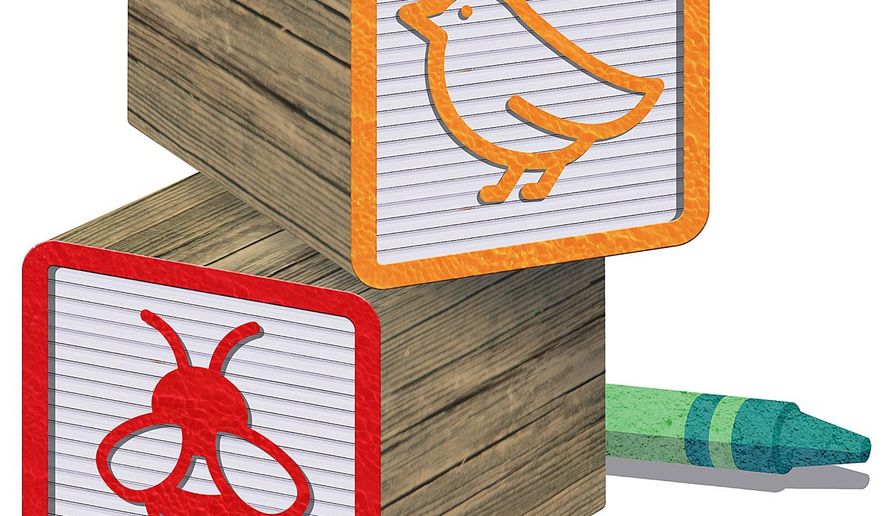OPINION:
Upon returning to middle school from an orthodontist appointment to tighten his braces, 12-year-old Johnny struggles through a pre-algebra lecture then schlepps off to his health class where he is instructed in anal sex, oral sex, masturbation and sexual fantasy.
Is this the latest Hollywood dystopian movie? A chapter from a juvenile fiction bestseller?
No. This is the actual experience of countless public schoolchildren across the United States who are receiving graphic sexual instruction, courtesy of the U.S. government.
Welcome to Comprehensive Sexuality Education (CSE), funded by our tax dollars and delivered via our federal Teen Pregnancy Prevention (TPP) program.
Most parents want their children to understand the negative health consequences of risky sexual behavior. But do we want our children, grandchildren — or any children for that matter — sexualized by their schoolteachers using a graphic CSE curriculum? Some of these programs, taught to children as young as 12, are so explicit they would violate FCC standards if shown on the evening news.
Subtly — and also not so subtly — they sexualize children by normalizing teen sex. Consider these excerpts from current federally funded TPP programs for middle-school students:
A role-play activity from “It’s Your Game Keep it Real,” asks children to respond to “pressure lines” that normalize sexual activity between children. For example,
• “They were making out and he started feeling on her, you know, ‘down there.’ And then she started to feel on him, too.”
• “I think we should do more than just kissing and touching.”
• “I just feel so close to you. That’s why I want to have sex with you.”
Another CSE program, “Making Proud Choices,” eroticizes condom use, telling children, “You can use condoms as a method of foreplay You can think up a sexual fantasy using condoms tease each other sexually while putting on the condom.”
The widely used TPP program “Making a Difference,” which claims to be “abstinence education,” asks children, “How do people express their sexual feelings? What is Abstinence?” The manual says, “Answers may include oral sex, dancing, masturbation grinding, sexual fantasy, anal sex, touching each other’s genitals saying I like you.”
Proponents of CSE try to justify such graphic content, claiming it is necessary to reduce teen pregnancy and STDs. But are these programs effective? According to a new, independent analysis, federally funded, school-based CSE programs show “far more evidence of failure than success.”
The findings are detailed in a landmark report, “Re-Examining the Evidence: School-Based Comprehensive Sex Education in the United States.” This report was recently released by the highly respected Institute for Research and Evaluation (IRE), an organization with 25 years of experience evaluating school-based sex education programs (See SexEdReport.org).
IRE rigorously examined the same peer-reviewed studies the U.S. Department of Health and Human Services (HHS) relied upon to label 18 school-based CSE programs as “evidence-based” for preventing pregnancy and STDs. Yet IRE found that many of the evaluations had not even measured program impact on pregnancy or STDs. Those that did showed “no evidence of effectiveness” when analyzed using recommended standards from the field of prevention research.
According to IRE’s analysis, none of these school-based CSE programs showed effectiveness at increasing consistent condom use among sexually active teens — a behavior that can reduce STDs. This is especially concerning in light of the recent Centers for Disease Control data, from their annual Sexually Transmitted Disease Surveillance Report, showing an estimated 20 million new STD infections in 2016, with young people representing half of those infections.
More troubling still, the peer-reviewed studies examined by IRE and HHS showed that four of the 18 federally endorsed CSE programs actually increased teen pregnancy or sexual activity, including oral sex.
The IRE report points out that the TPP designation of “effectiveness” was often based on “cherry picking” one minimal indicator produced in a study by the program’s own developer, while completely ignoring independent evaluations showing ineffectiveness on more significant indicators or even demonstrating harm.
And although an HHS internal review conducted last year produced findings similar to IRE’s, HHS continues to recommend and fund these harmful CSE programs.
The Trump administration proposed eliminating the failing TPP programs in the FY2018 budget, and the House agreed, passing a bill to zero out TPP funding. However, the Senate Appropriations Committee recently approved $101 million for TPP. This bill (S.1771) now awaits action by the full Senate.
In contrast, only $25 million is being proposed for abstinence/sexual risk avoidance education, also known as SRA, even though according to the IRE analysis, evidence for SRA effectiveness (though limited) looks more promising than for CSE.
We urge senators of both parties to (1) examine the harmful content of these CSE programs, (2) review the critical new evidence in the IRE report, (3) zero out TPP funding in the FY2018 budget and (4) increase federal funding for SRA.
Nothing less than the health and innocence of our children is at stake.
• Sharon Slater is the president of Family Watch International and co-chair of the Protect Child Health Coalition. She directed the documentary, “The War on Children: The Comprehensive Sexuality Education Agenda” (SexEdReport.org).




Please read our comment policy before commenting.